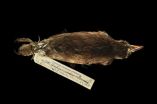MIT neuroscientists explain 'Proustian effect' of small details attached to big memories
2011-01-14
(Press-News.org) CAMBRIDGE, Mass. – Neuroscientists at MIT's Picower Institute of Learning and Memory have uncovered why relatively minor details of an episode are sometimes inexplicably linked to long-term memories. The work is slated to appear in the Jan. 13 issue of Neuron.
"Our finding explains, at least partially, why seemingly irrelevant information like the color of the shirt of an important person is remembered as vividly as more significant information such as the person's impressive remark when you recall an episode of meeting this person," said co-author Susumu Tonegawa, Picower Professor of Biology and Neuroscience and director of the RIKEN-MIT Center for Neural Circuit Genetics.
The data also showed that irrelevant information that follows the relevant event rather than precedes it is more likely to be integrated into long-term memory.
Shaping a memory
One theory holds that memory traces or fragments are distributed throughout the brain as biophysical or biochemical changes called engrams. The exact mechanism underlying engrams is not well understood.
MIT neuroscientists Arvind Govindarajan, assistant director of the RIKEN/MIT Center for Neural Circuit Genetics; Picower Institute postdoctoral associate Inbal Israely; and technical associate Shu-Ying Huang; and Tonegawa looked at single neurons to explore how memories are created and stored in the brain.
Previous research has focused on the role of synapses—the connections through which neurons communicate. An individual synapse is thought to be the minimum unit necessary to establish a memory engram.
Instead of looking at individual synapses, the MIT study explored neurons' branch-like networks of dendrites and the multiple synapses within them.
Boosting the signal
Neurons sprout dendrites that transmit incoming electrochemical stimulation to the trunk-like cell body. Synapses located at various points act as signal amplifiers for the dendrites, which play a critical role in integrating synaptic inputs and determining the extent to which the neuron acts on incoming signals.
In response to external stimuli, dendritic spines in the cerebral cortex undergo structural remodeling, getting larger in response to repeated activity within the brain. This remodeling is thought to underlie learning and memory.
The MIT researchers found that a memory of a seemingly irrelevant detail—the kind of detail that would normally be relegated to a short-term memory--may accompany a long-term memory if two synapses on a single dendritic arbor are stimulated within an hour and a half of each other.
"A synapse that received a weak stimulation, the kind that would normally accompany a short-term memory, will express a correlate of a long-term memory if two synapses on a single dendritic branch were involved in a similar time frame," Govindarajan said.
This occurs because the weakly stimulated synapse can steal or hitchhike on a set of proteins synthesized at or near the strongly stimulated synapse. These proteins are necessary for the enlargement of a dendritic spine that allows the establishment of a long-term memory.
"Not all irrelevant information is recalled, because some of it did not stimulate the synapses of the dendritic branch that happens to contain the strongly stimulated synapse," Israely said.
INFORMATION:
Source: "The dendritic branch is the preferred integrative unit for protein synthesis-dependent LTP," by Arvind Govindarajan, Inbal Israely, Shu-Ying Huang and Susumu Tonegawa. Neuron, 13 January, 2011.
Funding: RIKEN, the Howard Hughes Medical Institute and the National Institutes of Health.
ELSE PRESS RELEASES FROM THIS DATE:
2011-01-14
BATON ROUGE – We live in a world almost completely dependent upon machinery. Since the creation of the simple wheel, humans have found ways to increase quality of life and advance scientific knowledge using these devices. Though the prevalence of machinery has allowed us to build bigger, travel faster and create more quickly with complexity increasing as science advances, our dependence upon them has limitations. Everything that moves can and will break, especially metals under strain. And when they fail, the consequences can be catastrophic. LSU's Michael Khonsari has ...
2011-01-14
Dark energy is a mysterious force that pervades all space, acting as a "push" to accelerate the Universe's expansion. Despite being 70 percent of the Universe, dark energy was only discovered in 1998 by two teams observing Type Ia supernovae. A Type 1a supernova is a cataclysmic explosion of a white dwarf star.
These supernovae are currently the best way to measure dark energy because they are visible across intergalactic space. Also, they can function as "standard candles" in distant galaxies since the intrinsic brightness is known. Just as drivers estimate the distance ...
2011-01-14
The following highlights summarize research papers that have been recently published in Geophysical Research Letters (GRL).
In this release:
Spooky action at a distance, for earthquakes
Evidence for water ice near the Martian equator
Extraordinary uplift of Yellowstone caldera
New evidence could let supereruption off the hook
Auroral oscillations seen on Saturn
How much sea-level rise can coastal marshes withstand?
Rain affects carbon-dioxide flow between sky and sea
Ionosphere model overshoots during solar minimum
Anyone may read the scientific abstract for ...
2011-01-14
MANHATTAN, KAN. -- At any given time between 10 and 20 percent of cattle in the United States are afflicted with lameness, making it one of the most common ailments affecting feedlot and stocker calves.
That's why a Kansas State University research team is working to reduce the percentage of cattle affected by bovine lameness.
Three researchers -- David Anderson, professor of clinical sciences; Brad White, associate professor of clinical sciences; and Johann Coetzee, associate professor of clinical sciences -- are involved with bovine pain and welfare assessment at ...
2011-01-14
BATON ROUGE – The Crab Nebula, once considered to be a source of energy so stable that astronomers used it to calibrate their instruments, is dimming. LSU physicists Mike Cherry, Gary Case and graduate student James Rodi, together with an international team of colleagues using the Gamma-ray Burst Monitor, or GBM, on NASA's Fermi gamma-ray space telescope, discovered the anomaly. This revelation has proven astonishing for astronomers.
The Crab Nebula, one of the most studied objects in the sky, is the wreckage of a star that exploded in 1054. Considered a cornerstone of ...
2011-01-14
A research team from across the United States and Ecuador has pinpointed 1898 as the year the avipoxvirus, or avian pox, hit the Galapagos Islands and started infecting its birds. This estimation is vital to understanding avian diseases that affect today's Galapagos birds. The scientists' paper on the subject, "110 Years of Avipoxvirus on the Galapagos Islands," will be published on January 13 in PLoS ONE, an international, open-access science publication.
The research team, led by Dr. Patricia Parker of the University of Missouri–St. Louis, examined 3,607 finches and ...
2011-01-14
A new Chandra X-ray Observatory image of Messier 82, or M82, shows the result of star formation on overdrive. At a distance of only 12 million light years, M82 provides a unique cosmic laboratory for studying conditions similar to those that existed billions of years ago when stars were forming at a furious rate in most galaxies.
M82 is a so-called starburst galaxy, where stars are forming at rates that are tens or even hundreds of times higher than in a normal galaxy. The burst of star birth may be caused by a close encounter or collision with another galaxy, which ...
2011-01-14
DURHAM, N.C. — Researchers at the Duke Cancer Institute who have been studying prostate cancer cells for decades now think they know why PSA (prostate-specific antigen) levels reflect cancer progression.
"This is the first demonstration of a mechanism that explains why PSA is a bad thing for a tumor to produce," said senior author Sal Pizzo, M.D., Ph.D., chair of the Duke Department of Pathology. "I am willing to bet there is also a connection in cancerous cell growth with this particular biological signaling mechanism happening in other types of cells."
Using human ...
2011-01-14
GALVESTON, TX – Drugs that pharmaceutical companies market most aggressively to physicians and patients tend to offer less benefit and more harm to most patients — a phenomenon described as the "inverse benefit law" in a paper from the University of Texas Medical Branch at Galveston.
Published online Thursday, Jan. 13 in the American Journal of Public Health, the article explores recent withdrawals of blockbuster drugs due to safety concerns and finds a clear pattern of physician-focused marketing tactics that ultimately exposed patients to a worsening benefit-to-harm ...
2011-01-14
The American Heart Association today issued a call to action for the public, health professionals, the food industry and the government to intensify efforts to reduce the amount of sodium (salt) Americans consume daily.
In an advisory, published in Circulation: Journal of the American Heart Association, the association sets out the science behind the American Heart Association's recommendation for the general population, which is to consume no more than 1500 milligrams (mg) of sodium a day because of the harmful effects of sodium – elevated blood pressure and increased ...
LAST 30 PRESS RELEASES:
[Press-News.org] MIT neuroscientists explain 'Proustian effect' of small details attached to big memories

